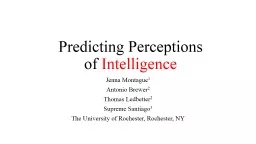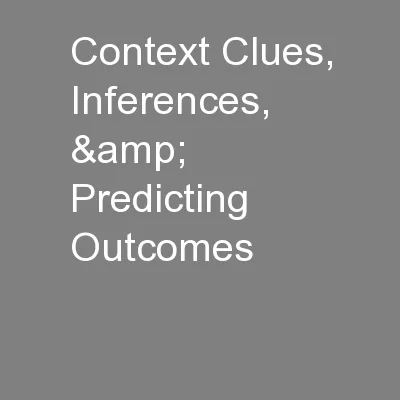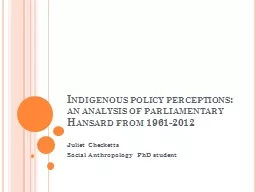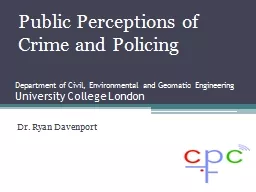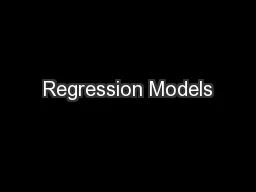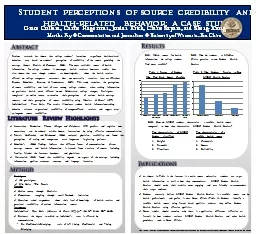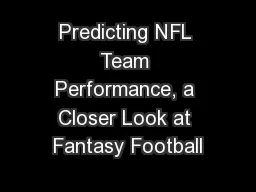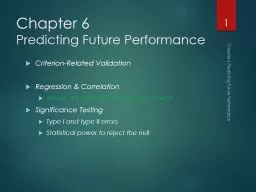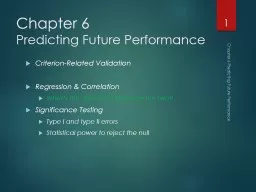PPT-Predicting Perceptions of
Author : tatyana-admore | Published Date : 2018-11-25
Intelligence Jenna M ontague 1 Antonio Brewer 2 Thomas Ledbetter 2 Supreme Santiago 3 The University of Rochester Rochester NY Authors Notes Jenna Montague Buffalo
Presentation Embed Code
Download Presentation
Download Presentation The PPT/PDF document "Predicting Perceptions of" is the property of its rightful owner. Permission is granted to download and print the materials on this website for personal, non-commercial use only, and to display it on your personal computer provided you do not modify the materials and that you retain all copyright notices contained in the materials. By downloading content from our website, you accept the terms of this agreement.
Predicting Perceptions of: Transcript
Download Rules Of Document
"Predicting Perceptions of"The content belongs to its owner. You may download and print it for personal use, without modification, and keep all copyright notices. By downloading, you agree to these terms.
Related Documents

